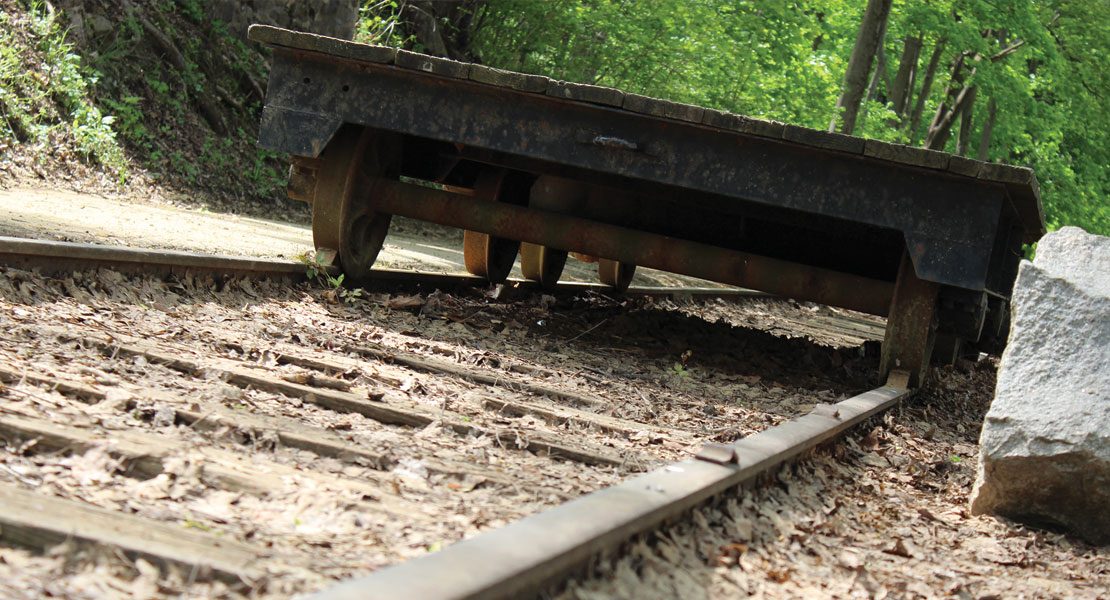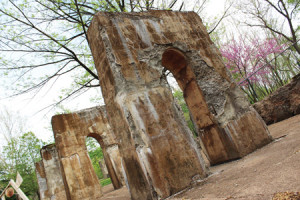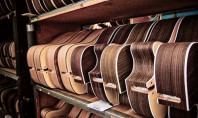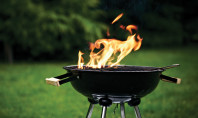Lock Ridge Furnace Museum & Park

Located off Franklin Street in Alburtis, the 59-acre Lock Ridge Furnace Museum and Park is perhaps the best-preserved example of the many iron-producing plants that once dominated the Lehigh Valley’s industrial landscape.
Built in 1867-68, near the newly completed junction of the Catasauqua and Fogelsville Railroad with the East Pennsylvania Railroad, the first of Lock Ridge’s two blast furnaces was put online in March of 1868, with the second following in July of 1869. Shortly after beginning production, Lock Ridge was purchased by the Thomas Iron Company, which at the time was one of the Lehigh Valley’s largest iron-producing conglomerates. Because Thomas’ main plant in Hokendauqua already included six furnaces, designated No. 1 through No. 6, the Lock Ridge furnaces became known as No. 7 and No. 8.
Like many Pennsylvania iron plants, Lock Ridge’s furnaces were fueled by anthracite, or “hard coal.” An extremely dense, relatively clean variety of coal that burns slowly and emits little smoke, anthracite is very rare and accounts for less than 2% of all coal deposits in the United States. In Northeastern Pennsylvania, however, the state’s “Coal Region” – a large tract of land in the central Appalachian Mountains – contains the largest known deposits of anthracite in the country. This proximity made it a viable fuel for the industrial plants of the Lehigh Valley.
The opening of the Lock Ridge complex spelled both prosperity and growth for the surrounding community.
The opening of the Lock Ridge complex spelled both prosperity and growth for the surrounding community. To accommodate the influx of people, many new homes and public facilities were built. By 1869, a grand superintendent’s residence, two large foremen’s homes and several brick double and four-unit houses for the furnace workers and their families had been constructed.
In 1870, a new school was built, followed by an even larger one four years later. According to the local reverend Frank P. Laros, by the early 1910s, the community was home to “two churches, a post office, a railway depot, express and telegraph office, a school house, a feed store, a feed, lumber and coal yard, one saddler shop, three grocery and general merchandise stores, a cigar and shoe store, a novelty store, a drug store, a tailor shop, three hotels, a saloon and restaurant, a carriage works, a butcher shop, barber shop, blacksmith shop, two shirt factories, furnaces and silk mills.”
As a result of this growth, the community was officially incorporated as the borough of Alburtis on May 9, 1913. The following year, the Lock Ridge furnace earned the distinction of being the last furnace in the United States to still rely on anthracite as its primary fuel. Later that same year, Thomas Iron Company president Ralph H. Sweeter ordered a series of upgrades meant to ensure the plant continued production well into the 20th century.
Although the plant would continue to burn anthracite, two modern McKee-Nelson stoves were added to furnace No. 7. These stoves allowed the furnace to reach blast temperatures as high as 1,250 degrees in a faster, more fuel-efficient way, while also requiring less maintenance than the old iron pipe versions.
In 1917, the boiler house was completely rebuilt and modernized, while in 1918 the blowing engines, which are located in the engine room and provide the blast for driving the furnaces, were replaced. As noted by Milton Knedler, one of the Lock Ridge blacksmiths, this last upgrade was completed on Armistice Day, November 11, 1918. According to Knedler, as soon as the blowing engine installation was complete he and many other workers left the plant and headed to Macungie, where the town’s band was playing in celebration of the end of World War I. But despite these modifications, within just a few years the furnaces at Lock Ridge would be closed.
Following the end of World War I, the price of iron dropped significantly… As a result of these factors, the United States’ iron boom came to an end.
Following the end of World War I, the price of iron dropped significantly, while at the same time foreign producers began importing iron at costs far lower than that of producing in the United States. As a result of these factors, the United States’ iron boom came to an end. The Lock Ridge furnaces were shut down in 1921 – part of an overall industrial trend that swept both Pennsylvania and the nation.
After closing the furnaces, the Thomas Iron Company sold the property to William Butz, a prominent Lehigh Valley businessman. Butz had the majority of the plant dismantled for scrap metal and wood, leaving only the shell of the furnaces and the stone remnants of several buildings.
In the early 1970s, the Butz family donated the remaining structures and land to Lehigh County for use as a park. The remains of furnace No. 7 were restored as part of the Furnace Museum, which now includes the rebuilt furnace room, engine house and original cast house. The museum and park opened to the public in August of 1976, and in 1981 the furnace was added to the National Register of Historic Places.
Today, although still owned by the county, the museum is maintained and operated by the Lehigh County Historical Society. From May through September, guided tours are offered on weekends from 1 p.m. to 4 p.m. Visitors are also welcome to use the numbered signs to take self-guided tours at their leisure.
In addition to the museum, the park also offers a variety of recreational activities, such as hiking paths, biking trails and a little league baseball field. The Swabia Creek, which was once used as a water source for the Lock Ridge furnaces, provides limited fishing, while an 81-seat pavilion complete with a grill, fireplace and restrooms can be reserved for weddings, special occasions and parties.

















